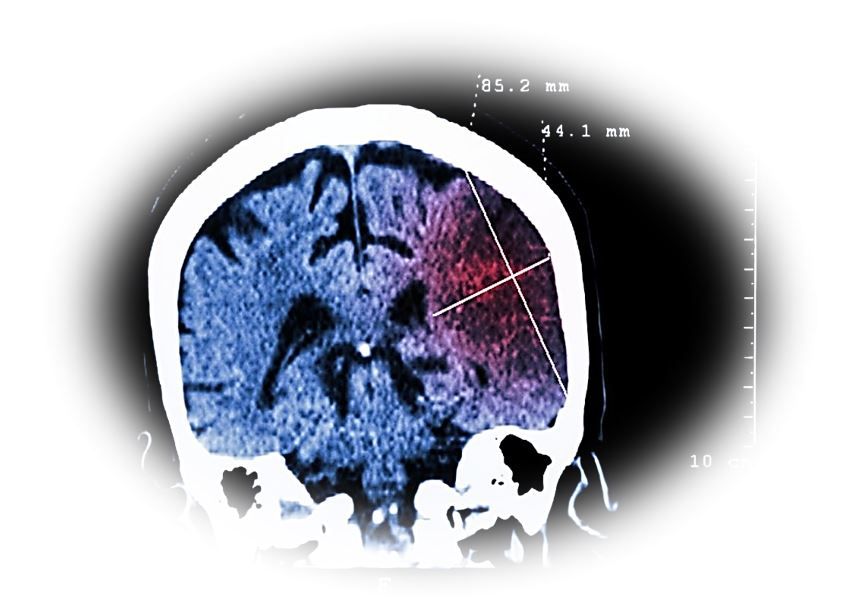Milvexian Added to Standard DAPT Fails to Reduce Stroke Risk, May Increase Risk of Bleeding
AXIOMATIC-SSP is considered the largest clinical trial of activated factor XIa inhibition added to standard antiplatelet therapy for secondary stroke prevention.
Recently published data from the phase 2 AXIOMATIC-SSP study (NCT03766581) showed that the combination of anticoagulation with milvexian, a factor XIa inhibitor, and standard antiplatelet treatment did not substantially reduce the composite outcome of symptomatic ischemic stroke.
©Puwadol Jaturawuttichai/stock.adobe.com

Overall, the 25 mg twice-daily of milvexian demonstrated the greatest effect and is currently being assessed in an ongoing phase 3 trial (NCT05702034).
The dose-finding trial comprised of 2366 patients with acute (<48 h) ischemic stroke or high-risk TIA who were randomly assigned to placebo (n = 691); milvexian 25 mg once daily (n = 328); or twice-daily doses of milvexian 25 mg (n = 318), 50 mg (n = 328), 100 mg (n = 310), or 200 mg (n 351) for 90 days. All participants (mean age 70 years, 36% women) received clopidrogel 75 mg daily for the first 21 days and aspirin 100 mg daily for the first 90 days.
Senior investigator Graeme J Hankey, MD, MBBS, chair in stroke research at the University of Western Australia, and colleagues primarily examined the composite of ischemic stroke or incident covert brain infarct on MRI at 90 days. After 90 days from randomization, the primary efficacy outcome occurred in 17% of patients in the placebo group, 16% of those in the milvexian 25 mg once-daily group, 18% of participants in the 50 mg twice-daily group, 15% of those in the 100 mg twice-daily group and 16% of those in the 200 mg twice-daily group who had an evaluable MRI image.
Because each of the 3 candidate models did not reach the 0.049 significance threshold, no significant dose-response was detected. In terms of relative risk, in comparison with placebo, the 25 mg milvexian once- and twice-daily groups had the highest model-based estimates (0.99 [95% CI, 0.91-1.05]; 0.99 [95% CI, 0.87-1.11]), followed by 50 mg twice daily (0.93; 95% CI, 0.78-1.11), 100 mg twice daily (0.92; 95% CI, 0.75-1.13), and 200 mg twice daily (0.91; 95% CI, 0.72-1.26).
Compared with placebo, findings showed fewer ischemic strokes in all milvexian dose groups except for the 200 mg twice-daily group, which was consistent across subgroups of index event type, age, and sex. The secondary composite end point of ischemic stroke, myocardial infarction, or all-cause death occurred in 6% of placebo-assigned participants, and 5% of participants in the 25 mg once-daily group, 5% of those in the 25 mg twice-daily group, 5% of those in the 50 mg twice-daily group, 5% of those in the 100 mg twice-daily group, and 9%of those in the 200 mg twice-daily group.
The safety end point of major bleeding, a secondary end point, was ascertained by the occurrence of type 3 and type 5 bleeding, according to the Bleeding Academic Research Consortium (BARC) classification system, with a slight modification. Overall, results showed slightly higher rates of BARC type bleeding in the milvexian groups. Any BARC type bleeding was observed in 11%, 9%, 12%, 13%, and 10% of respective groups in comparison with 8% of those on placebo.
AXIOMATIC-SSP is considered the largest clinical trial of activated factor XI inhibition added to standard antiplatelet therapy for secondary stroke prevention. Additional results showed a higher rate of adverse events reported in the renal and urinary disorder system organ class in the 200 mg milvexian twice-daily group (14%), compared with placebo (4%), 25 mg once-daily (3%), 25 mg twice-daily (3%), 50 mg twice-daily (3%), and 100 mg twice daily (3%) groups.
This article originally appeared on our partner site NeurologyLive.®